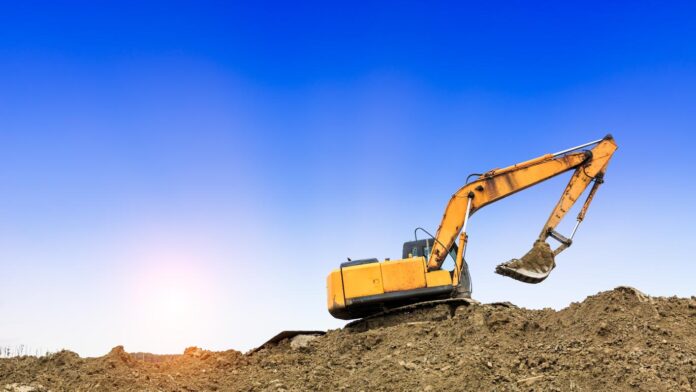Running a construction business effectively and seamlessly can be nerve-racking. The employer has to keep records and monitor everyday activities. For instance, the employer has to check whether the crew is meeting milestones or whether the workers are following the safety precautions or not.
Luckily, the construction daily logs are here to help! Rather than trying to be everywhere, you can ask the manager to create the construction daily log instead. With its help, they will receive information about daily activities without having to track workers themselves. But how can you create and maintain these logs?
SmartBarrel is one solution that automates the daily log process. You can check out the company and learn more about what they offer here: https://smartbarrel.io/general-contractor/.
In this article, you’ll find out ten easy steps to craft the daily construction reports. So, let’s dive in:
Easy steps to create a construction daily log
Follow these steps to draft and maintain the construction daily reports:
1. Select an automated reporting tool

The first step in creating a construction log is to opt for an effective tool. In this technological era, construction businesses can find advanced tools such as logging websites and mobile applications. Adopting automated tools helps in creating accurate reports according to specific instructions. They also enable you to upload relatable documents and photographs to craft a detailed report. Once the log is ready, the employer can sign in and share it with the crew.
2. Provide essential job details
Start your report by listing the essentials of the project. Fill out the details such as:
- Construction phase
- Project’s name and construction type
- Starting date of the project
- Expected completion date
- Name of a construction project manager
- And other valuable data.
Identifying this information will bring the project to the limelight sooner than later. It will eliminate the confusion and create a clear project frame, which will help the construction firm examine the necessary details altogether.
3. Note down the site’s condition

Site condition refers to weather conditions of construction day and any effects it had on the project. List down the expected weather conditions of the day in your report to prevent the delays beforehand. For instance, if the construction didn’t proceed on a rainy day, the client would instantly know since the firm has a log indicating the weather conditions.
This way, the site managers won’t need to deliver every minute detail to the project owner. Just forward the report file by the end of the day, which will have all the relevant details.
4. List down the accomplished tasks
After examining the site conditions, document the completed tasks. No need to provide any detailed information; just list down the briefs of the completed milestones in a day.
As a result, you will already know the progress of the project, which will eventually help you determine if the workers will meet the deadline or if they should speed up a little more.
5. Provide a personnel list

The personnel list refers to all the on-site workers present on the construction day, including the engineers, subcontractors, and laborers. Categorize all the personnel according to their jobs, provide each person’s name in the log, their working hours, and position.
Since you’ll have the list of personnel, you can easily determine the total number of workers and their invested working hours in the project.
6. Document equipment and usage
Similar to the personnel list, note down each piece of equipment workers used during the construction. Mark the usage timing and the purpose of every piece of inventory. Moreover, include an extra note if the construction team encounters any problem related to the equipment.
For instance, if the equipment accidentally breaks down or requires some maintenance, you should highlight it in the daily log. Highlighting these issues will help you identify which equipment needs maintenance and which ones are working fine.
7. Document equipment deliveries

Don’t forget to mark down each material and inventory delivery. Also, pen down the previous deliveries in the daily report that arrived late. It will help the business keep track of inventories and manage future purchases.
8. Make a security report
Create a security section in the daily construction log to list the accidents, injuries, or other safety hazards that took place in a day. For example, If an employee has shown carelessness by removing the hardhat while working, mark that as well in the construction report.
As a result, the employer will know which employee is not following the safety precautions while working so he can take action against that worker. The report should also include a brief of measures that the team has taken to prevent further accidents.
9. Mention the on-site visitors

The daily construction log not only includes the members working on the project but also the people who visit the site. Note down the on-site individuals except the ones already reported in the personnel list.
They can be other crewmates, stakeholders, family members or friends of any employee, or community members who aren’t on the clock. Also, you can ask them to include a reason for visiting the construction site.
10. Upload required attachments
Visualized reports will make it easier for anyone to understand the daily log. Uploading the relevant files, including drawings, graphs, photos, or documents, provides a detailed context for the information in the report.
Attach all the files to relevant sections of the report. For instance, capture the photograph of muddy ground that caused the delay in construction.
Final words
The best time to start implementing automated construction logs is now. When the construction client starts receiving the daily construction logs, the relationship improves between both parties.
Ensure adding a brief about everything that happened in a day. The brief should have the information to cover the events that took place. Drafting the regular reports maximizes the transparency of the projects and allows the employer to examine the activities of each day.
These reports help the businesses indicate the problems in real-time and resolve them before they hinder the project. Hopefully, the article will help you out in creating the daily construction reports.









